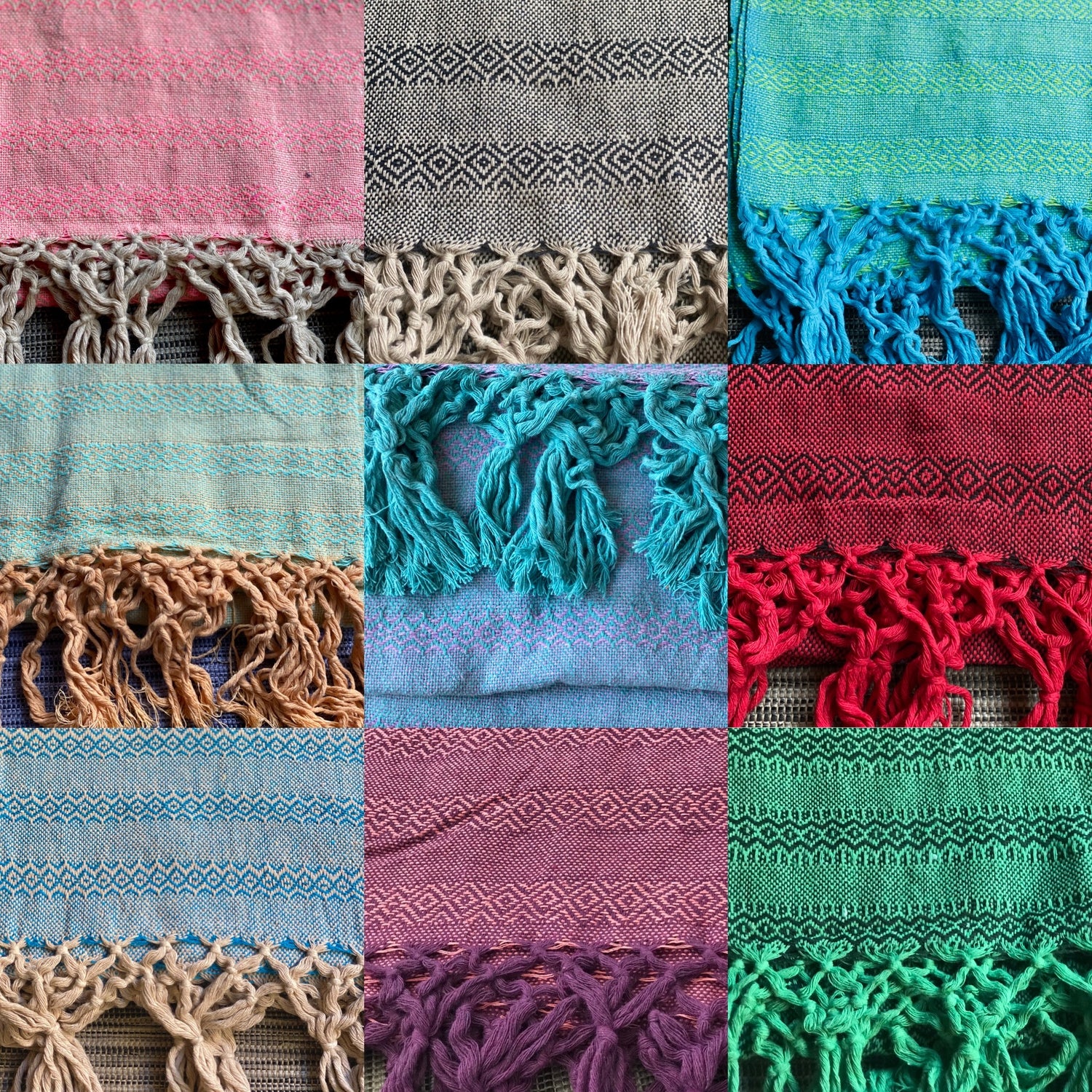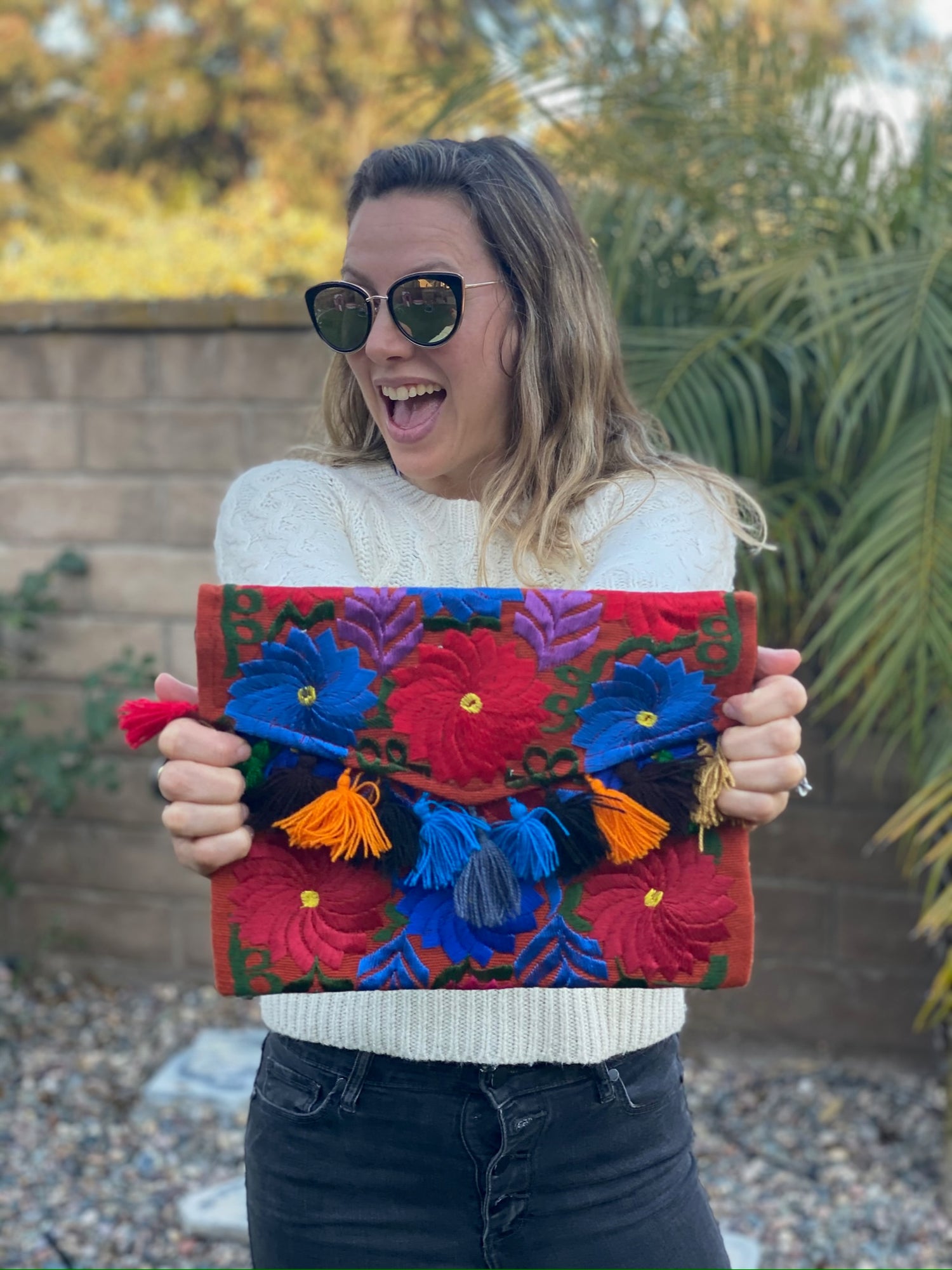The world of textiles is rich and varied, and understanding the differences between garments can enhance your appreciation for them.
A rebozo is not just a standard shawl; it carries deep cultural significance and unique craftsmanship that set it apart.
While both serve the purposes of warmth and style, the rebozo has specific uses in pregnancy, labor, and everyday life that a typical shawl does not.

Rebozos have been crafted and worn by women in Mexico for generations, symbolizing heritage and community. The design of a rebozo often includes intricate patterns, making it a striking accessory that blends function with art.
In contrast, regular shawls vary widely in style and are produced globally, lacking the same cultural backstory.
As you explore this topic, you will learn how these two garments differ in design, usage, and cultural importance. Understanding these differences will deepen your connection to each piece and its place in both fashion and tradition.
Key Takeaways
- A rebozo has unique cultural and historical significance in Mexican tradition.
- Its design showcases intricate craftsmanship, making it distinct from regular shawls.
- The rebozo serves specific functions in pregnancy and daily life that shawls do not.
Historical and Cultural Significance

The rebozo holds deep historical and cultural significance in Mexican society. It connects traditional practices with various events and key figures that have shaped its legacy. Understanding its roots offers insight into the broader context of Mexican culture.
Roots in Mexican Heritage
The rebozo has roots that date back to the pre-Hispanic era in Mexico. Indigenous women, particularly from groups like the Nahuatl and Otomi, initially made it.
Crafted from woven fibers, the rebozo served multiple purposes, such as providing warmth and protection.
During the colonial period, the Spanish introduced new materials and weaving techniques, enriching the craft. As the rebozo evolved, it became essential in daily life and ceremonial events. It often represents Mexican identity and tradition, passed down through generations.
Key Figures and Events
Prominent figures such as Frida Kahlo and María Félix helped popularize the rebozo, showcasing its beauty and cultural significance.
Kahlo, an influential artist, often wore rebozos in her paintings and personal life, reflecting her pride in Mexican heritage.
Mexican Independence Day is another critical event where the rebozo shines. Women wear rebozos in parades, symbolizing resilience and cultural pride. This connection to significant events deepens the emotional resonance of the rebozo in Mexican culture.
Comparative History
When comparing the rebozo to other shawls, its unique characteristics stand out. The mantilla and mantón de manila, popular in Spain and the Philippines, share similarities but differ in cultural context.
The rebozo is multifunctional, serving as a transport tool for babies and cargo, unlike traditional shawls.
Each shawl has a specific cultural role. For example, the Filipino alampay is used similarly to the rebozo but is more ornamental. This comparative history highlights how the rebozo remains a vital element of Mexican women's lives, showcasing the blending of indigenous and colonial influences throughout history.
Design and Craftsmanship

A rebozo is not just a shawl; it reflects intricate craftsmanship and cultural significance. Understanding the differences in design and craftsmanship helps appreciate these unique textiles.
Weaving Techniques and Materials
Rebozos are typically handmade using traditional techniques. They can be woven from various materials, including cotton, wool, silk, and rayon.
Cotton is the most common choice due to its durability and comfort.
Indigenous women often use the backstrap loom, which allows them to create detailed patterns. The weaving process is labor-intensive, requiring skill and patience.
Techniques like ikat dyeing are popular, where threads are dyed before weaving to create vibrant patterns. Each rebozo’s texture and feel depend on the materials and methods used, giving it a unique character.
Regional Variations and Styles
Different regions in Mexico have their own styles of rebozos. For example, those from Oaxaca tend to feature bright colors and intricate designs, while rebozos from Chiapas might focus on more subdued tones.
Local materials and cultural influences shape these differences. In areas like Tenancingo and Guerrero, artisans may blend traditional techniques with contemporary designs.
You can find distinctive rebozos that represent their hometown pride, as seen in the styles from Santa María del Río and La Piedad. Each region’s rebozo acts as a canvas for its unique culture and heritage.
Symbolism and Patterns
Rebozos carry deep symbolism, often reflecting the wearer’s identity and cultural heritage. Patterns and colors can signify various meanings, such as fertility or protection.
Traditional motifs may include nature-inspired designs, while others represent specific stories or beliefs within indigenous communities. In some cases, rebozos are linked to traditional medicine, acting as a tool for healing.
The use of colors also plays a significant role. For instance, red and black might symbolize strength and resilience. The thoughtful integration of pattern and color showcases the artistry of the weaver and connects the rebozo to its cultural roots.
Frequently Asked Questions

This section addresses common inquiries about the differences between a rebozo and a regular shawl. Each question focuses on specific aspects, including design, cultural significance, and practical uses.
What distinguishes a rebozo from a traditional shawl in terms of design and use?
A rebozo is typically longer and narrower than a traditional shawl. Its design allows for versatility, as it can be worn in multiple ways, such as wrapped around the head or body.
Regular shawls often serve mainly as accessories for warmth or style.
Can rebozos be effectively used for maternity purposes and how do they differ in this use from other shawls?
Yes, rebozos are commonly used for maternity purposes. They can support babies and provide comfort for mothers.
Unlike regular shawls, which may not be designed for carrying, rebozos are specifically made to handle this function due to their strength and length.
What are the cultural significances attached to rebozos as opposed to regular shawls?
Rebozos hold deep cultural significance in Mexican traditions, symbolizing heritage and identity. They are often used in ceremonies and celebrations.
Regular shawls do not carry the same cultural weight and are mainly seen as fashion items.
In what ways do the materials and weaving techniques of rebozos differ from other shawls?
Rebozos are often made from traditional materials such as cotton, wool, or silk and feature unique weaving techniques. This craftsmanship can include intricate patterns and colors specific to various regions in Mexico.
Regular shawls may use different materials and lack these culturally specific patterns.
How do the sizes and shapes of rebozos compare to those of traditional shawls and wraps?
Rebozos are generally longer and narrower than traditional shawls, making them suitable for a wide variety of uses. Regular shawls may come in a variety of sizes and shapes, often being square or rectangular, while rebozos maintain a consistent shape.
Are there specific techniques for wearing a rebozo that differentiate it from a regular shawl?
Yes, there are specific techniques for wearing a rebozo that can differ significantly from how you wear a regular shawl.
You can wrap it around your shoulders, drape it over your head, or tie it in various ways, accommodating several functions beyond simple warmth or style.




